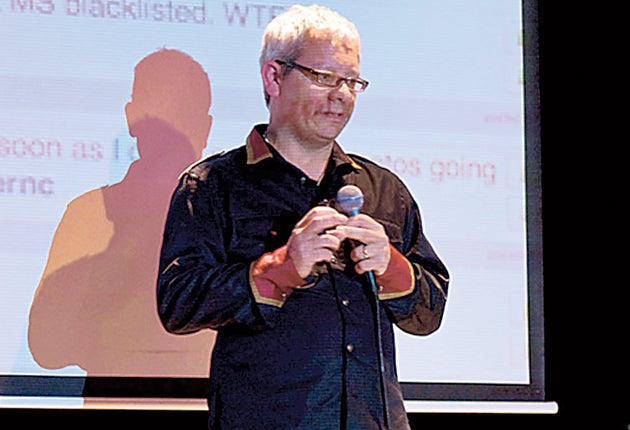Why does everyone hate Comic Sans so much?
It's only a font but critics want to write it out of existence

When Vincent Connare sat down in front of his computer in 1994 to put the finishing touches to a new piece of children's software for Microsoft, he decided it lacked a suitably engaging font. Little did he know that more than a decade later, his creation – Comic Sans – would become the subject of history's first campaign to ban a typeface.
The font, designed by Mr Connare to be the embodiment of fun for Microsoft Bob – a now long-forgotten attempt by the computing giant to make its Windows 95 program more accessible to kids – has become a ubiquitous presence on the typeface menus of millions of computers and has even tempted brands such as Adidas to adopt it for advertising campaigns and webpage designs.
But it seems that the very childlike jauntiness which has made Comic Sans so appealing to computer users publicising village fetes and amateur designers creating logos for toy shops has also made it the target of a growing internet hate campaign. The organisers are intent on it being labelled as a typographic abomination and removed from widespread public use.
Campaigners are trying to raise £14,000 to make a documentary highlighting the way that Comic Sans, which even its inventor admits was designed to be used on computer screens and not printed material, has inveigled its way into daily life.
Time magazine is among the organisations which seem to have already turned against the font. Earlier this year it named Comic Sans as one of history's 50 worst inventions, alongside sub-prime mortgages and asbestos.
Other opponents of the font have invented a program which scours the internet looking for sites written in Comic Sans and changes them to Helvetica. Holly Combs, a US graphic designer who is leading the campaign on BanComicSans.com, told The Independent: "Comic Sans just isn't designed well. It was never made to be printed and yet it is everywhere I look. Hardly a day goes by when I don't see in an inappropriate setting. I would just appeal to people to be more thoughtful. When I get an invitation to the funeral of a friend and it is written in Comic Sans, I just find that thoughtless. It is an epidemic."
Typography experts argue that the font has become a victim of its own unsought success. Mr Connare, who works for a London-based type design company, took the inspiration for his much-derided creation from the fonts used in comic books.
Ironically, the design work was finished too late for Comic Sans to be included in Microsoft Bob, so it was first used in a different program before being included in the menu of fonts which drops down for millions of Windows users around the world every day.
Simon Garfield, author of a new book on fonts, Just My Type, said: "There was an age when fonts were things in the hands of designers and professionals, but the arrival of PCs and laptops changed all that. Software allows people to instill their emotions into type and Comic Sans has an approachability – it looks as if people have written it themselves.
"The trouble is that it is good for use only in a limited number of ways. It is not appropriate for the side of ambulances or the font that the BBC uses to promote its composers of the year. There is an element of typographical snobbery about all this, but you can't get away from the fact it has just become too popular." But Mr Connare said: "I don't think Comic Sans is 'too popular'. It will be when people stop using it.
"Until then put it on everything from a loaf of bread in Provence to a beach towel on Bondi Beach."
My worst fonts
Neuland Inline
Reminiscent of something Fred Flintsone might carve into prehistoric rock, or more recognisably, what Disney used for its most successful cartoon animation of all time, The Lion King. Invented by a German typographer, Rudolf Koch, in 1923, it is now considered a "Theme Park" font, more comfortable on rides at Alton Towers than on the page.
Souvenir
"Souvenir of what, I would like to know?" asks Peter Guy, a book designer for the Folio Society. "A souvenir of every ghastly mistake ever made in type design gathered together – with a few never thought of before – into one execrable mish-mash." Appeared on Bee Gees Albums and occasionally in Playboy.
Papyrus
Avatar may have cost more to make than any other film in history, but its use of font was far less extravagant, having been available free on every desktop PC for some time. Avatar's director, James Cameron, was even pictured in a T-shirt asserting @Papyrus 4 Ever!"
Brush Script
First made available in America in 1942, this font was used by American propagandists to persuade country folk to "bathe with a friend" or "dig for victory" – Britain's Ministry of Agriculture showed far less extravagance. Also the type face used to introduce the soap Neighbours to the world in 1985.
Simon Garfield
Join our commenting forum
Join thought-provoking conversations, follow other Independent readers and see their replies
Comments
Bookmark popover
Removed from bookmarks